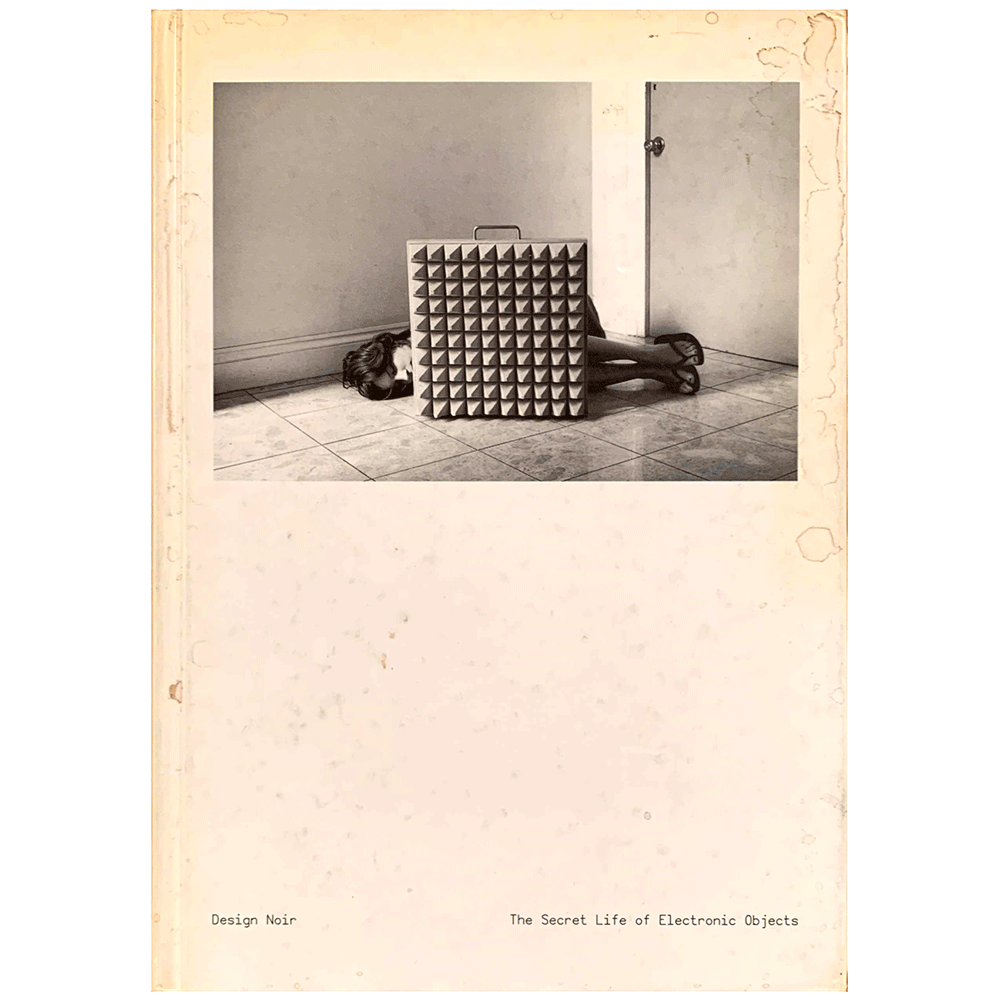This is a favorite design book [↓] of mine. Design Noir by Fiona Raby and Anthony Dunne was published in 2001. My copy is pretty beat up, well-used over any number of years. I always like the way that books with white covers inevitably show their age.

It seems appropriate given what that the book describes:
Beneath the glossy surface of official design lurks a dark and strange world driven by real human needs. A place where electronic objects co-star in a noir thriller, working with like-minded individuals to escape normalisation and ensure that even a totally manufactured environment has room for danger, adventure and transgression. We don’t think that design can ever fully anticipate the richness of this unofficial world and neither should it. But it can draw inspiration from it and develop new design approaches and roles so that as our new environment evolves, there is still scope for rich and complex human pleasure.
Corporate futurologists force-feed us a ‘happy-ever-after’ portrayal of life where technology is the solution to every problem. There is no room for doubt or complexity in their techno-utopian visions. Everyone is a stereotype, and social and cultural roles remain unchanged. Despite the fact that technology is evolving, the imagined products that feature in their fantasies reassure us that nothing essential will change, everything will stay the same. These future forecasters have a conservative role, predicting patterns of behaviour in relation to technological developments. They draw from what we already know about people, and weave new ideas into existing realities. The resulting scenarios extend pre-existent reality into the future and so reinforce the status quo rather than challenging it. Their slick surface distracts us from the dystopian vision of life they wish for. By designing the props for the videos produced to show us what the future could be like, design works to keep official values in place.
An occasional glance through almost any newspaper reveals a very different view of everyday life, where complex emotions, desires and needs are played out through the misuse and abuse of electronic products and systems. A mother shoots her son after an argument over which television channel to watch; a parent is outraged by a speaking doll made in China which sounds like it swears; the police set a trap for scanner snoopers — people who listen in to emergency radio frequencies illegally — by broadcasting a message that a UFO has landed in a local forest, within minutes several cars arrive and their scanners are confiscated. Many of these stories illustrate the narrative space entered by using and misusing a simple electronic product, how interaction with everyday electronic technologies can generate rich narratives that challenge the conformity of everyday life by short-circuiting our emotions and states of mind. These stories blend the physical reality of place with electronically mediated experience and mental affect. They form part of a pathology of material culture that includes aberrations, transgressions and obsessions, the consequences of and motivations for the misuse of objects, and object malfunctions. They provide glimpses of another more complex reality hidden beneath the slick surface of electronic consumerism.
March 28, 2022
Design Noir
Design Noir
Reading
Design Noir (Fiona Raby and Anthony Dunne)
Speculative Everything (Fiona Raby and Anthony Dunne)
Resources
How to Build Scenarios (Wired)